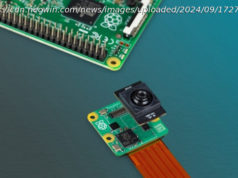An electric car that charges in minutes
With the US introduction of the Mirai in 2015, Toyota became a trailblazer in hydrogen propulsion for passenger cars. The Mirai is essentially an EV that runs on hydrogen (making it a fuel cell electric vehicle, or an FCEV), so its advantage over rival EVs is that it’s essentially as fast to recharge as pulling up to the gas pump. And to make the all-new second-generation 2021 Mirai more enticing, it gets sleek new styling, rear-wheel drive, and longer range. But since the Mirai is only sold in California and on the Hawaiian island of Oahu due to charging infrastructure limitations, most people will never be able to buy one. FCEVs and Hydrogen Power Like all FCEVs, the Mirai employs a fuel cell stack that combines hydrogen with oxygen from the air to create a chemical reaction that produces electricity, with water as the only emission vented beneath the car. The electricity is used to power an electric motor that drives the wheels, while an auxiliary battery is used to start the car, supply vehicle accessories, store energy captured from regenerative braking, and provide supplemental power to the electric traction motor. The 2021 Mirai’s new rear-wheel-drive configuration allows room for three hydrogen tanks and 11 pounds of hydrogen, instead of five pounds and two tanks like the previous model. The larger hydrogen capacity increases driving range to just over 400 miles, or by 30% compared with the outgoing Mirai. There’s no need to charge the battery, which can take several hours in an EV even with fast charging. Instead, you simply fill the tank with hydrogen in about five minutes. As it did with the first-generation Mirai, Toyota includes up to $15,000 of complimentary hydrogen. The 2021 Mirai’s fuel-cell stack is located under the hood instead of beneath a raised section of the passenger compartment floor as in the first-gen model, thereby increasing passenger space. The car also uses a smaller and lighter but higher capacity lithium-ion battery that fits between the rear seat and trunk and boosts cabin space. The Mirai produces 182 horsepower,31 horses more than last model, but at 221-lb.-ft. of torque, it gets 26 fewer lb.-ft. less than its predecessor. Toyota contends that the car’s transmission, an electric motor transaxle with the electric motor directly geared to a single reduction gear that drives the output shaft, actually increases torque to the wheels over the previous generation.






